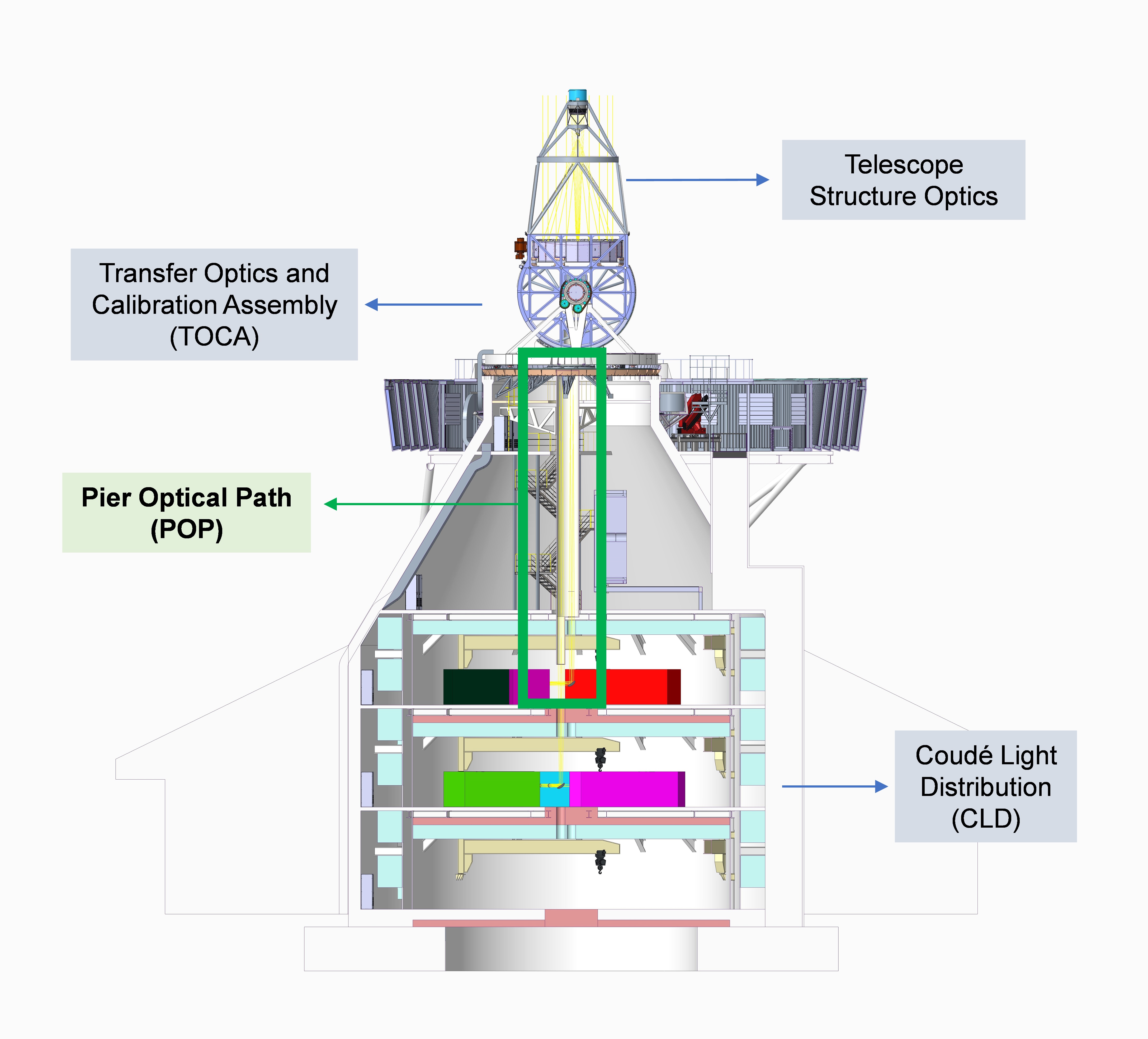A description of the preliminary design of the EST Pier Optical Path is given.
 Position of the POP sub-assembly in the telescope optical path.
Position of the POP sub-assembly in the telescope optical path.
The Pier Optical Path (POP) is the dioptric system in charge of transferring the light from the aplanatic secondary focal plane to the science focus, in order to feed the scientific instruments that will be located in the Coudé rooms. The accompanying figure shows the position of the POP.
This subassembly will be housed in a vacuum vessel to avoid local seeing degradation along the optical path, from the telescope structure to the Coudé rooms (20 metres length). The vacuum tube will use the first and last lenses of the POP as entrance and exit windows, respectively.
Several trade-offs between a two-magnification stage system and a three magnification stage system have been studied with the aim of obtaining the best solution that ensures compliance with all the requirements established.
In terms of image quality, the optical designs that have been explored are nominally diffraction-limited for the full field of view of the telescope (90x90 arcsec) covering a wavelength range from 380 to 2300 nm.
Chromatic behaviour was one of the key aspects studied during the POP design, given that the system shall generate a maximum chromatic focus shift of 30 mm in each subarm of the Coudé room (blue, visible, red and infrared). Besides, it shall also be achromatic for several spectral lines of interest (517.3 nm, 617.3 nm and 632.2 nm in the visible arm and 1083 and 1565 nm in the infrared arm). For that reason, a beam splitter dividing the beam into the visible and infrared arms is placed in the optical path. The infrared arm will be transmitted and the visible will be reflected. Thus, in order to redirect the visible beam to the scientific instruments, a folding mirror is placed in its intermediate pupil plane.
Other guidelines for the design are that the F-number delivered to the instruments shall be 50, that the system shall create an intermediate pupil plane, that the exit beams shall be telecentric with a maximum departure from telecentrism of 0.3°, and that the optical path length shall comply with the pier mechanical envelope and with the optical path required to reach the instruments.
These design considerations also play an important role in the choice of the beam that is delivered to each Coudé room, as well as in the design of the Coudé Light Distribution system. On the one hand, the division of the beam by the dichroic beam-splitter allows having a dedicated room for visible instruments and another for infrared instruments. On the other hand, the optical path needed to distribute the light to the instruments and their envelopes make it more appropriate to house the infrared instruments in the upper room and the visible ones in the middle room.
Conversations with blank lens suppliers have started to ensure the manufacturability of all the components of the POP subassembly. Currently, a refinement of the design is being performed to adapt the alternatives using the feedback received from the companies.
